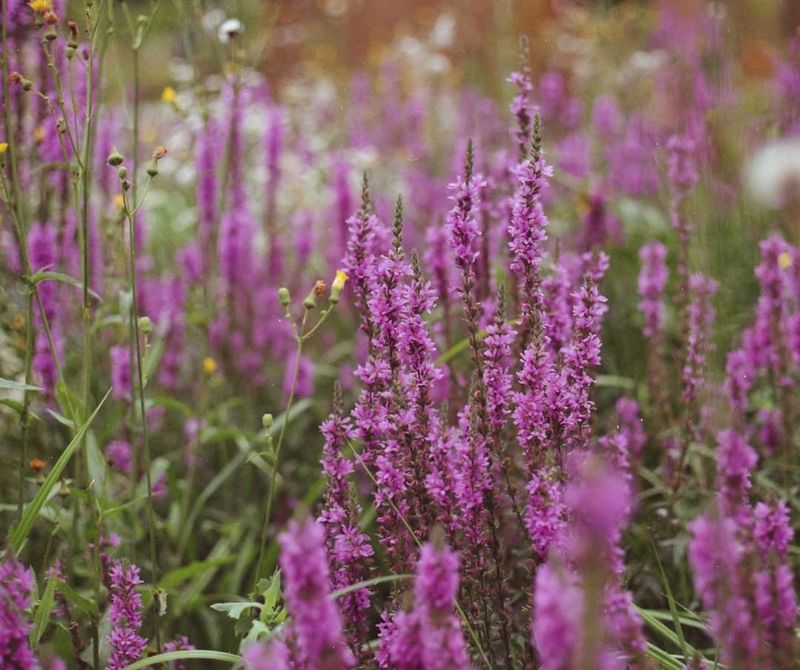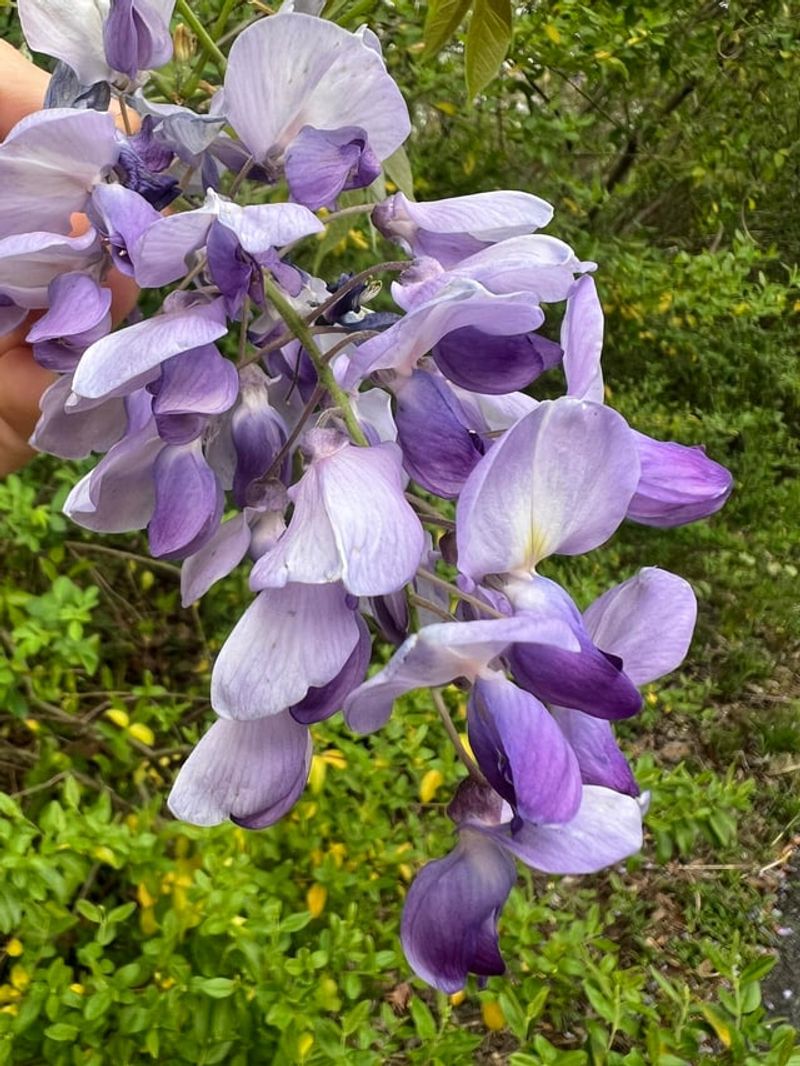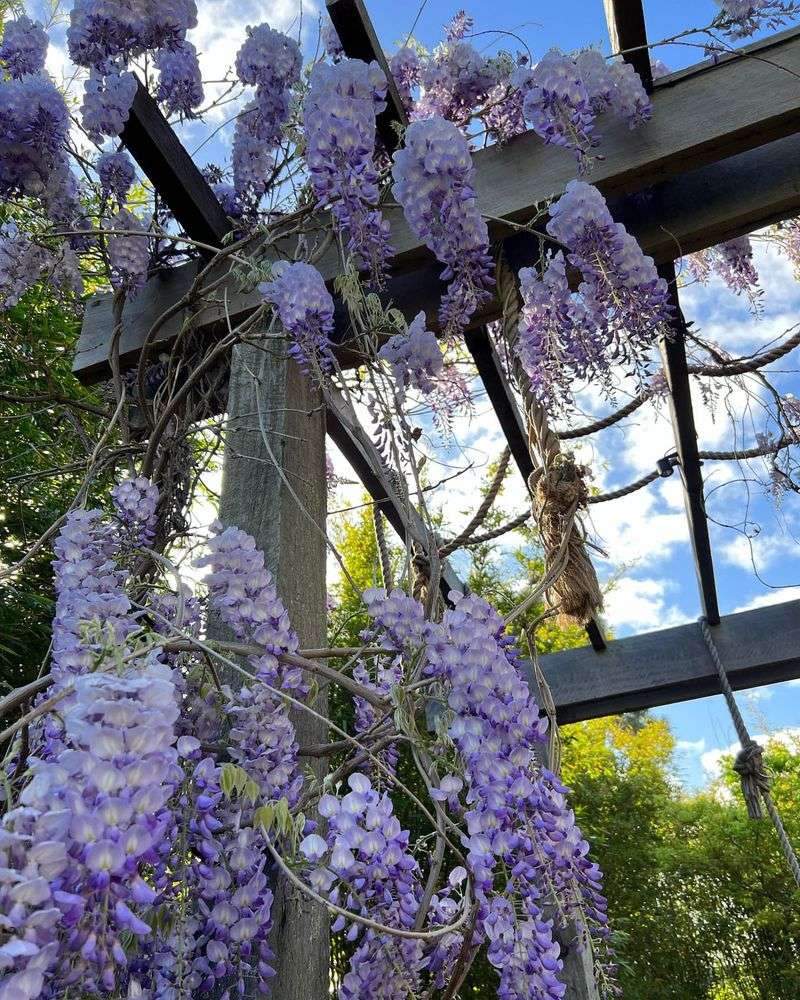A vine with charm on the surface and trouble at its core now climbs across South Carolina fences, and many homeowners spot the warning signs too late.
Asian wisteria wraps itself around posts and railings with force, tightens like a vise, and leaves structures groaning under its weight.
The look may echo the graceful American species, yet the difference matters, since the native cousin behaves with far more restraint. Learn one from the other because it often saves a yard from a world of headaches.
Asian Wisteria Grows At Lightning Speed
Chinese and Japanese wisteria can grow up to 10 feet in a single growing season. That explosive growth allows them to quickly climb fences, trees, and buildings before homeowners realize what’s happening.
Once established, these vines develop thick woody stems that become incredibly difficult to remove. Their rapid spread makes them one of the most aggressive invasive plants in the southeastern United States, requiring constant vigilance from property owners.
Purple Flowers Hide A Destructive Nature
Those gorgeous cascading purple blooms might catch your eye in spring, but beauty comes with a price. Asian wisteria uses powerful twining stems that wrap clockwise around anything they touch, creating tremendous pressure over time.
Fence posts crack, gutters collapse, and tree branches snap under the relentless grip of these vines in your South Carolina yards. Even sturdy structures suffer damage as the woody stems thicken and tighten, sometimes causing thousands of dollars in repair costs for unsuspecting homeowners.
Native Plants Cannot Compete With This Invader
When Asian wisteria takes over an area, it creates dense shade that blocks sunlight from reaching plants below. Native wildflowers, shrubs, and young trees cannot survive without adequate light and eventually wither off completely.
South Carolina’s natural ecosystems suffer as biodiversity decreases and wildlife lose their food sources. The vines form impenetrable thickets that crowd out everything else, transforming diverse forests into single-species wastelands that offer little value to local animals and insects.
Identifying Asian Species Versus American Wisteria Matters
American wisteria grows more slowly and behaves much better in gardens than its Asian cousins. Learning the difference helps homeowners make smart planting decisions and identify problem vines quickly.
Asian varieties have longer flower clusters and their vines twist clockwise, while American wisteria has shorter blooms and twists counterclockwise. Seed pods also differ—Asian types have fuzzy, bean-like pods, whereas American wisteria produces smooth pods. Knowing these details prevents accidental planting of invasive species.
Removing Established Vines Requires Serious Effort
Cutting wisteria at ground level won’t destroy it—the roots simply send up new shoots within weeks. Effective removal demands digging out the entire root system, which can extend surprisingly far underground and weigh hundreds of pounds.
Many South Carolina homeowners resort to repeated cutting combined with herbicide application to stumps. Even with chemicals, complete eradication often takes two to three years of persistent follow-up. Professional removal services sometimes become necessary for heavily infested properties.
Seeds Spread Through Water And Wildlife
Asian wisteria produces abundant seeds that remain viable for years in the soil. Birds eat the seeds and deposit them far from the parent plant, creating new infestations across neighborhoods and natural areas.
Floodwaters also carry seeds downstream, establishing populations along riverbanks and wetlands. A single mature vine can produce thousands of seeds annually, making containment extremely challenging. Preventing seed production by removing flowers before they develop pods helps limit spread to new locations.
Early Detection Saves Money And Headaches
Spotting Asian wisteria when vines are still young and small makes removal dramatically easier and cheaper. Regular fence line inspections help catch problems before they escalate into major projects requiring professional help.
Young vines have thinner stems that pull up more easily, and their root systems haven’t developed the extensive networks that mature plants possess. Teaching family members and neighbors to recognize wisteria ensures everyone watches for new growth, protecting entire South Carolina communities from this persistent invader.








